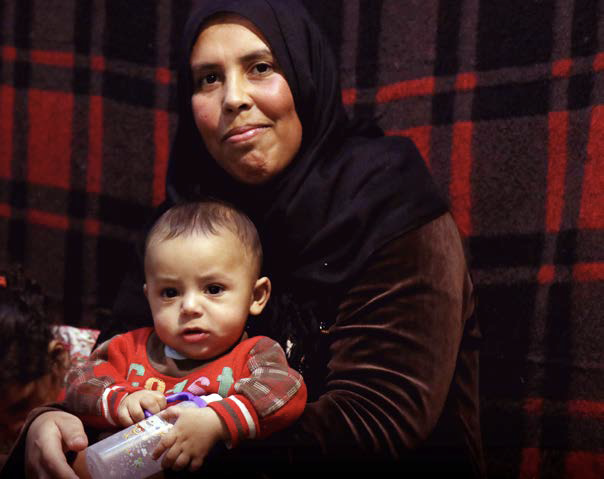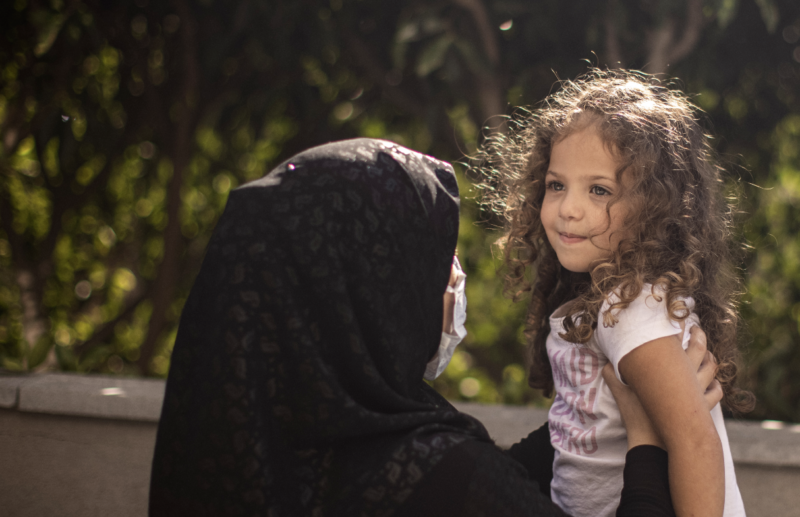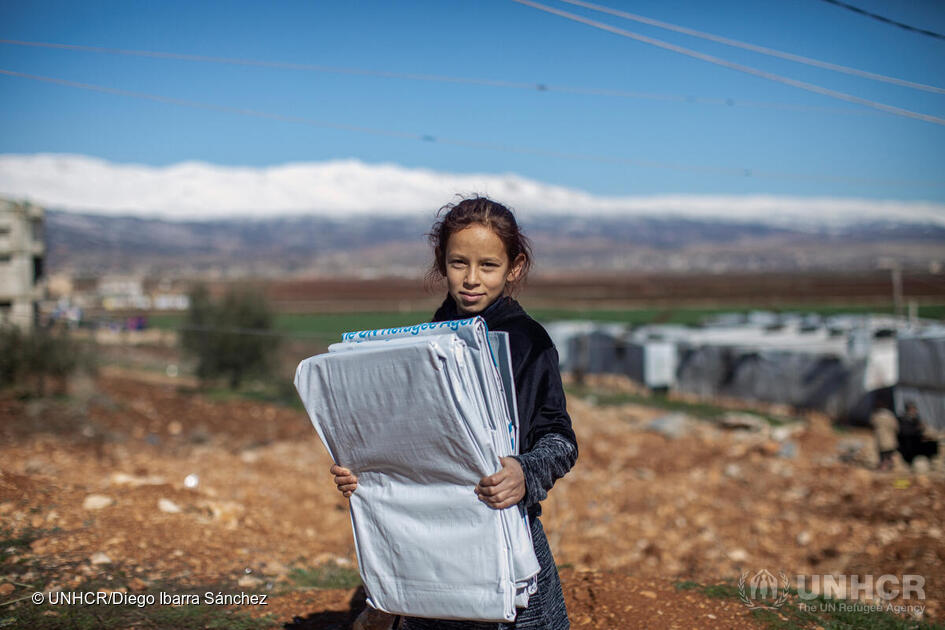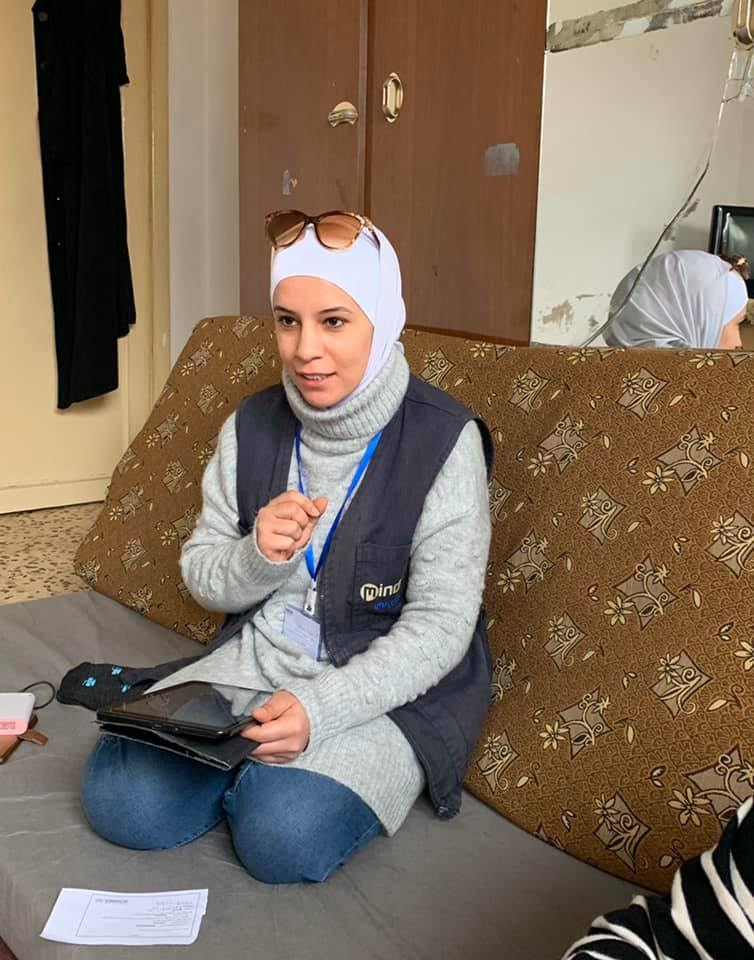
“For winter, the most important thing is warmth,” says Noura, a Syrian mother of four living in Bekaa, Lebanon. Like any mother, she simply wants to keep her children safe and warm during the cold winter months.
But Noura knows all too well what it’s like to not be able to do that. After being forced to flee the war in Syria, winters have been hard for Noura’s family. Last winter especially. The shelter they live in flooded, and both Noura and her husband Hussein faced serious health issues.
“We felt really cold this winter. It was a very harsh winter, harsher than all the other winters,” Noura recalls, holding her youngest child, 9-month-old Mohammed, tightly in her arms.
Syrian refugees like Noura and her family were already facing very difficult circumstances before the COVID-19 pandemic erupted. Lebanon was enduring political and economic crises, which were compounded by the pandemic and the Beirut port explosion last August.
Economic shocks worsen poverty and aid effectiveness

Host communities who have supported and accommodated large numbers of Syrian refugees for nearly a decade, have likely been heavily affected by the COVID-19 pandemic. Newly updated figures from a microsimulation supported by the World Bank-UNHCR Joint Data Center on Forced Displacement (JDC) projects that poverty rates likely increased dramatically for both Syrian refugees and their Lebanese hosts, with up to 1 million additional Syrian refugees and 1.5 million Lebanese expected to fall below the international poverty line ($5.50 per day/per person) in 2021.
COVID-19-related closures of schools and shops in March 2020 were a blow to the Lebanese economy. Refugees, who are concentrated in low-skilled jobs in the informal sector, likely lost their primary source of income and increasingly rely on assistance. Meanwhile, the price of food in Lebanon quadrupled, and inflation cut purchasing power in half, hurting employed workers and their families, and severely limiting the impact of aid programs.
Recent rapid needs assessments and UNHCR and WFP administrative data suggest that refugees have few options to respond to these economic challenges, and some have resorted to negative coping mechanisms such as reducing food intake and incurring additional debt. Many have been unable to pay their rent, leading in some instances to forced eviction. These conditions exacerbated existing vulnerabilities and increased tensions between refugees and with their host communities.
Data gaps leave the most vulnerable ‘invisible’ to those that can help

The recent JDC-supported report—a joint effort by UNHCR, WFP, and World Bank—is an update to the “Compounding Misfortunes” study published last year, estimating the changes in poverty since the onset of COVID-19 among Syrian refugee and host communities in Lebanon, Iraq-KRI, and Jordan.
The study estimated the impact of recent economic shocks on household consumption and welfare, using a 2015 host community survey as a baseline.
Yet the researchers were hampered by underdeveloped or inaccessible national statistical systems, limiting their ability to accurately estimate poverty and the impact of crises and policy shocks.
These data gaps essentially make the world’s most vulnerable people invisible to policymakers who need to design and deliver programs targeting the forcibly displaced (FDPs) with the support they need. It also makes it difficult to track countries’ progress on the Sustainable Development Goals.
Bringing the forcibly displaced out of the statistical shadows

The JDC was established in October, 2019 to help bring refugees in Lebanon and other countries out of statistical shadows. Working with its partners, they collect, analyze, and disseminate data, thus shining a light on their challenges by describing their incomes, skills, health, economic activity, and other factors.
JDC also collects data on internally displaced persons, stateless people, returnees, asylum-seekers, and host communities, responsibly sharing its data widely with development partners, thus helping to achieve SDG 17 (Partnerships for the Goals).
About 85 percent of world’s nearly 80 million FDPs—pushed from their homes due to persecution, conflict, human rights violations, and other violent events—are hosted by developing countries.
Out of the cold and into the light
This winter Noura and her family received support from UNHCR and partners, including food, fuel, blankets, and winter cash assistance. She kept her children warm and got medical support for herself and her husband.
Aid workers and government staff used vulnerability-oriented targeting, strengthening assistance to people like Noura, through cash transfers, and other social safety nets and basic services. The availability of adequate data for the vulnerability-oriented targeting was a necessary condition for making the aid program a success.
“Without the winter aid, my situation would’ve been very bad,” Noura concludes. “It came as a savior during hardship. It really helped me.
Watch this video about how single mother Huda and her children struggled to cope with the consequences COVID-19 during the cold winter.
Photos (carousel): UNHCR/Diego Ibarra Sánchez
This story was first published on PARIS21’s Data for Change Campaign web page


